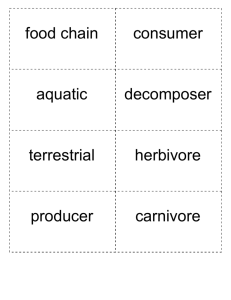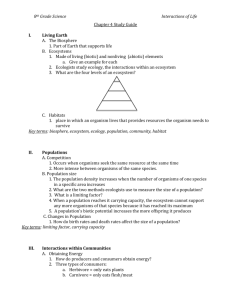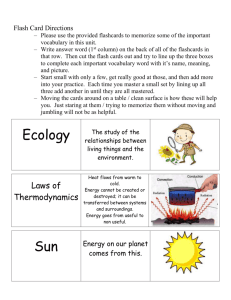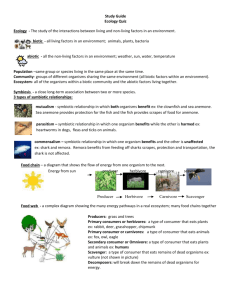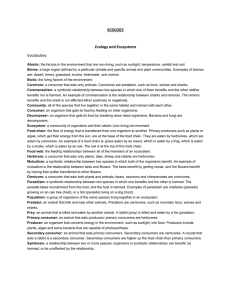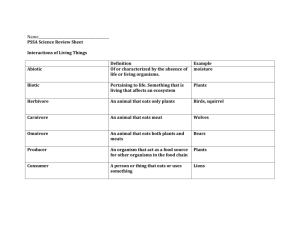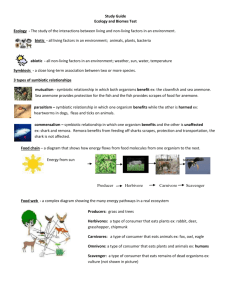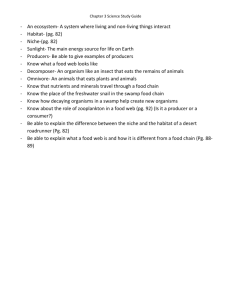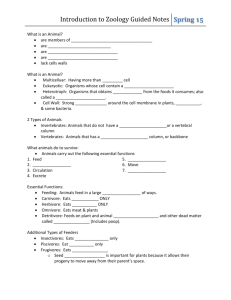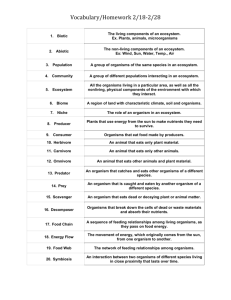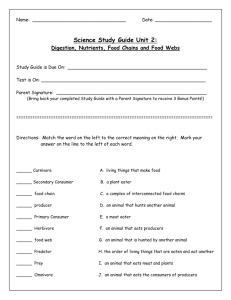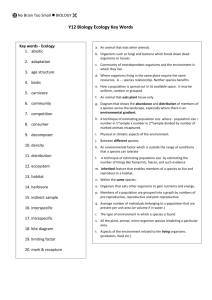TEK 8.11A Practice Questions
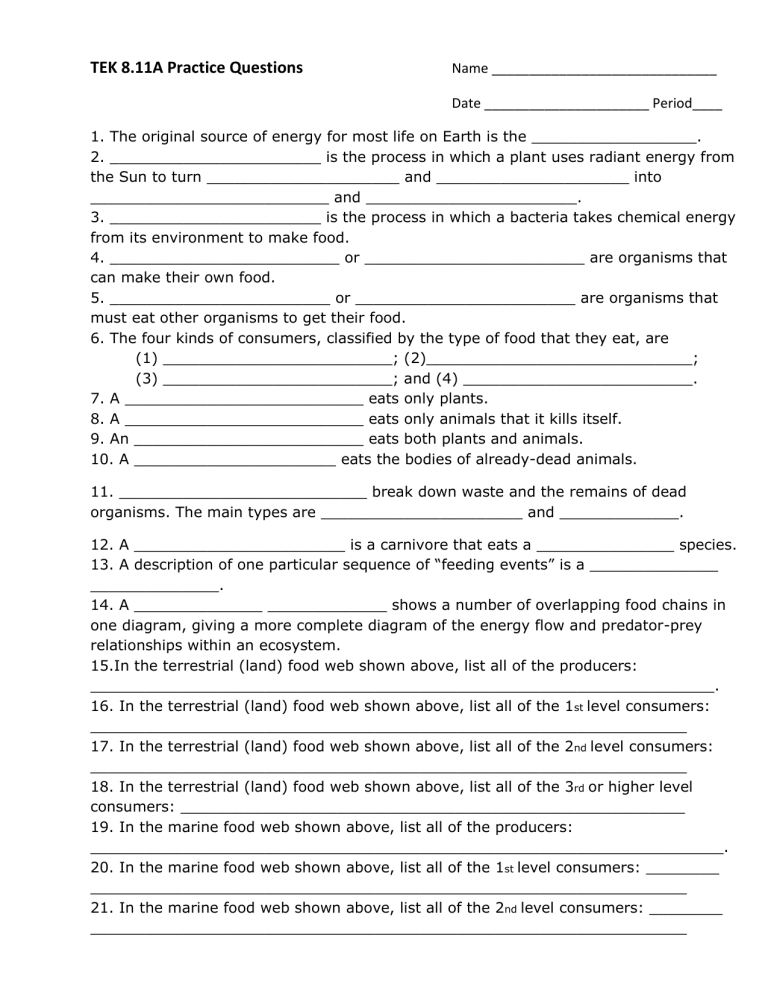
TEK 8.11A Practice Questions
Name ______________________________
Date ______________________ Period____
1. The original source of energy for most life on Earth is the __________________.
2. _______________________ is the process in which a plant uses radiant energy from the Sun to turn _____________________ and _____________________ into
__________________________ and _______________________.
3. _______________________ is the process in which a bacteria takes chemical energy from its environment to make food.
4. _________________________ or ________________________ are organisms that can make their own food.
5. ________________________ or ________________________ are organisms that must eat other organisms to get their food.
6. The four kinds of consumers, classified by the type of food that they eat, are
(1) _________________________; (2)_____________________________;
(3) _________________________; and (4) _________________________.
7. A __________________________ eats only plants.
8. A __________________________ eats only animals that it kills itself.
9. An _________________________ eats both plants and animals.
10. A ______________________ eats the bodies of already-dead animals.
11. ___________________________ break down waste and the remains of dead organisms. The main types are ______________________ and _____________.
12. A _______________________ is a carnivore that eats a _______________ species.
13. A description of one particular sequence of “feeding events” is a ______________
______________.
14. A ______________ _____________ shows a number of overlapping food chains in one diagram, giving a more complete diagram of the energy flow and predator-prey relationships within an ecosystem.
15.In the terrestrial (land) food web shown above, list all of the producers:
____________________________________________________________________.
16. In the terrestrial (land) food web shown above, list all of the 1 st level consumers:
_________________________________________________________________
17. In the terrestrial (land) food web shown above, list all of the 2 nd level consumers:
_________________________________________________________________
18. In the terrestrial (land) food web shown above, list all of the 3 rd or higher level consumers: _______________________________________________________
19. In the marine food web shown above, list all of the producers:
_____________________________________________________________________.
20. In the marine food web shown above, list all of the 1 st level consumers: ________
_________________________________________________________________
21. In the marine food web shown above, list all of the 2 nd level consumers: ________
_________________________________________________________________
22. In the marine food web shown above, list all of the 3 rd or higher level consumers:
__________________________________________________________________
__________________________________________________________________
23. ______________________ is a close relationship between different species that benefits at least one of the species in the relationship.
24. _____________________ is a symbiotic relationship in which both species benefit from the relationship. Examples include _________________________________
_________________________________________.
25. _____________________ is a symbiotic relationship in which one species benefits while the other species is not affected positively or negatively. Examples include
_________________________________________________________________.
26. _____________________ is a symbiotic relationship in which one species benefits
(the parasite) while the other is harmed (the host). Examples include _________
_________________________________________________________________.
27. Describe the life cycle of a parasite that relies on its host for part of its reproductive cycle. _______________________________________________________________
____________________________________________________________________
____________________________________________________________________
____________________________________________________________________.
